The pipeline at the centre of the Wet’suwet’en conflict is also central to the province’s long-running effort to attract multinational corporations and build up a liquefied natural gas export empire — all with infusions of public money. Here’s what you need to know
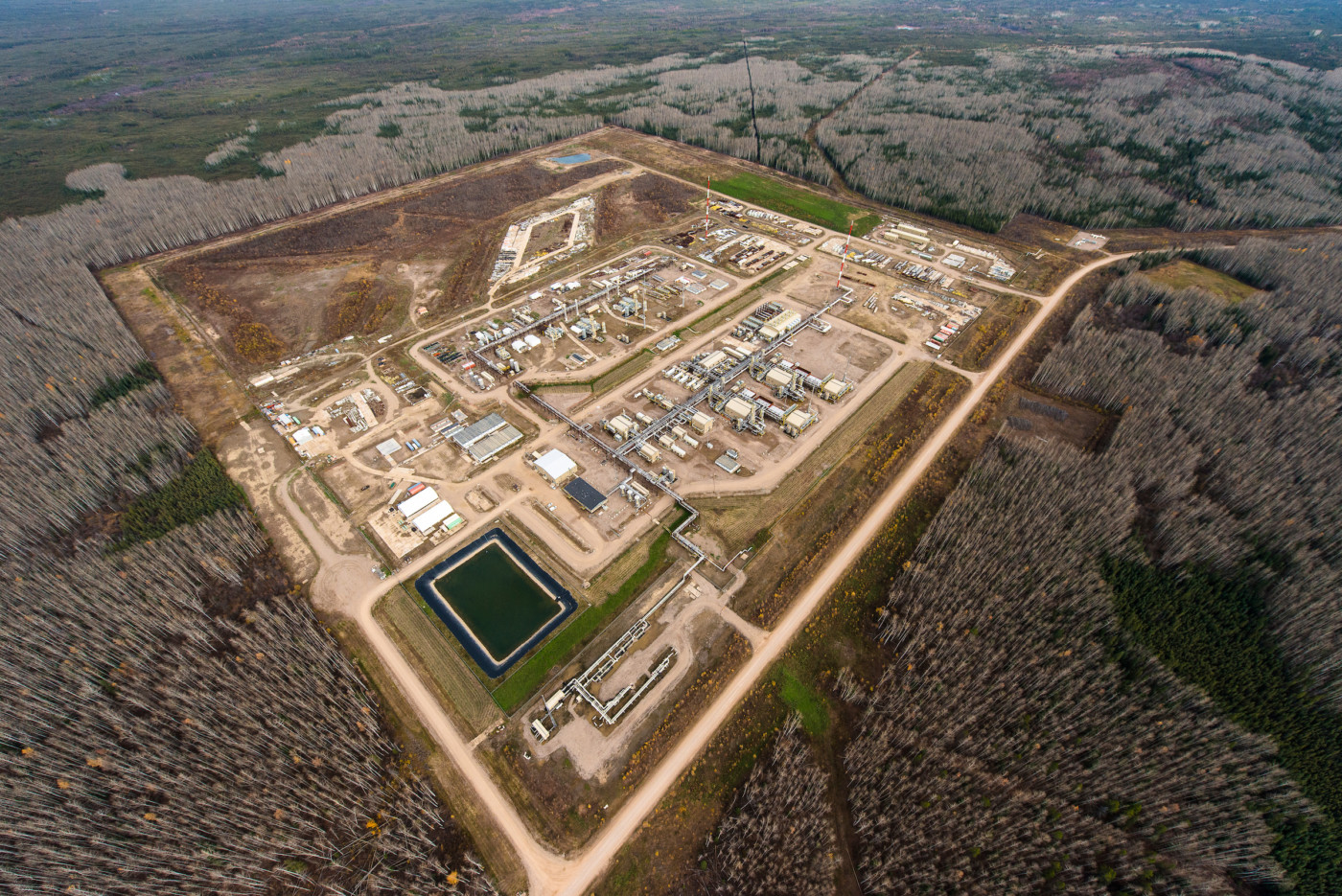
If you had mentioned the Coastal GasLink project two months ago at a dinner party you likely would have been met with blank stares and a quick segue to Meghan Markle and Prince Harry’s Vancouver Island hidey-hole.
Since early February, when the RCMP arrested Wet’suwet’en matriarchs, hereditary chiefs and their supporters — setting off nation-wide blockades of rail lines and ports and igniting a national debate about Indigenous rights and title, large resource projects and the global climate emergency — Coastal GasLink has risen from obscurity to infamy.
Most reports describe the project as “a natural gas pipeline.” But the reality is far more complex.
The Narwhal zooms out to focus on the bigger picture, which includes two other industrial projects in the works, one foreign-funded (LNG Canada) and the other publicly funded (the Site C dam).
Spoiler alert: the big picture includes billions in subsidies for industry, tens of thousands of idle and orphan fracking wells, a multi-billion dollar clean-up bill and massive climate impacts.
What is the Coastal GasLink pipeline?
The Coastal GasLink pipeline will carry fracked gas from gas plays on B.C.’s northeast to Kitimat on B.C.’s northwest for export to Asian markets.
The pipeline is owned by TC Energy Corporation, a Calgary-based company more commonly recognized by its former name TransCanada and for another fiercely opposed pipeline project, the Keystone XL.
TC Energy has partnered with some of the world’s most profitable oil and gas corporations to build the 670-kilometre Coastal GasLink pipeline, which will cut through old-growth forests, wetlands, rivers, streams and habitat for critically endangered species such as southern mountain caribou.
Want to know how much money TC Energy president and CEO Russell Girling makes? Girling made $11.4 million in 2018, according to company documents.
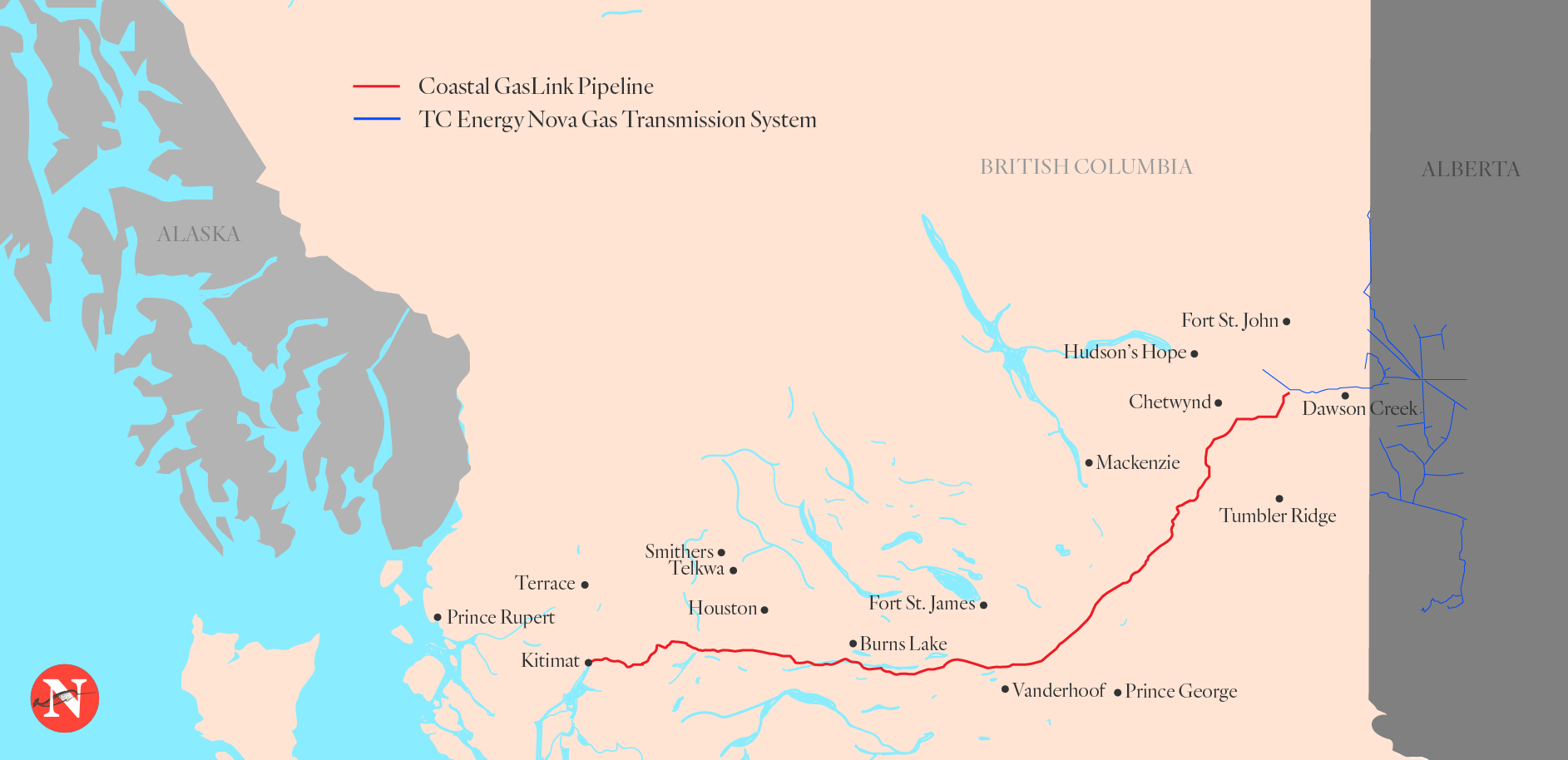
Map of the Coastal GasLink pipeline. Map: Carol Linnitt / The Narwhal
What does the Coastal GasLink pipeline have to do with the LNG Canada project?
The short answer: one would not exist without the other.
The longer answer?
LNG Canada project will take fracked gas from the Coastal GasLink pipeline and cool it in massive compressors — at a new Kitimat facility — to minus 162 degrees Celsius, the point at which gas turns into liquid. The liquefied gas will then be transported to Asia in ocean tankers as long as six football fields.
Natural gas prices recently fell to their lowest level in four years, due to a persistent glut. The United States, traditionally the main user of Canadian gas, is poised to become self-sufficient in the fuel due to new extraction technologies.
Cue the multinationals and the dream of LNG.
Demand for LNG has been growing, particularly in Asia, and B.C. wants in. (Although demand has recently stalled due to milder winters and the novel coronavirus outbreak, threatening to make LNG plants around the world unprofitable.)
LNG Canada is a joint venture of Royal Dutch Shell, Petronas, PetroChina, Mitsubishi and Korean Gas.
Royal Dutch Shell, the globe’s fourth largest oil and gas company, is a public British-Dutch owned corporation headquartered in the Netherlands. It owns 40 per cent of LNG Canada.
A second partner, Petronas, is owned by the Malaysian government and has a 25 per cent share in the project.
The Chinese government-owned PetroChina Company Ltd., the world’s third-largest oil and gas company, owns 15 per cent, as does Japanese multinational Mitsubishi.
Korean Gas Corp., which completes the multinational quintet, is owned by the South Korean government and is the world’s largest importer of liquefied natural gas (LNG). It has a five per cent share.
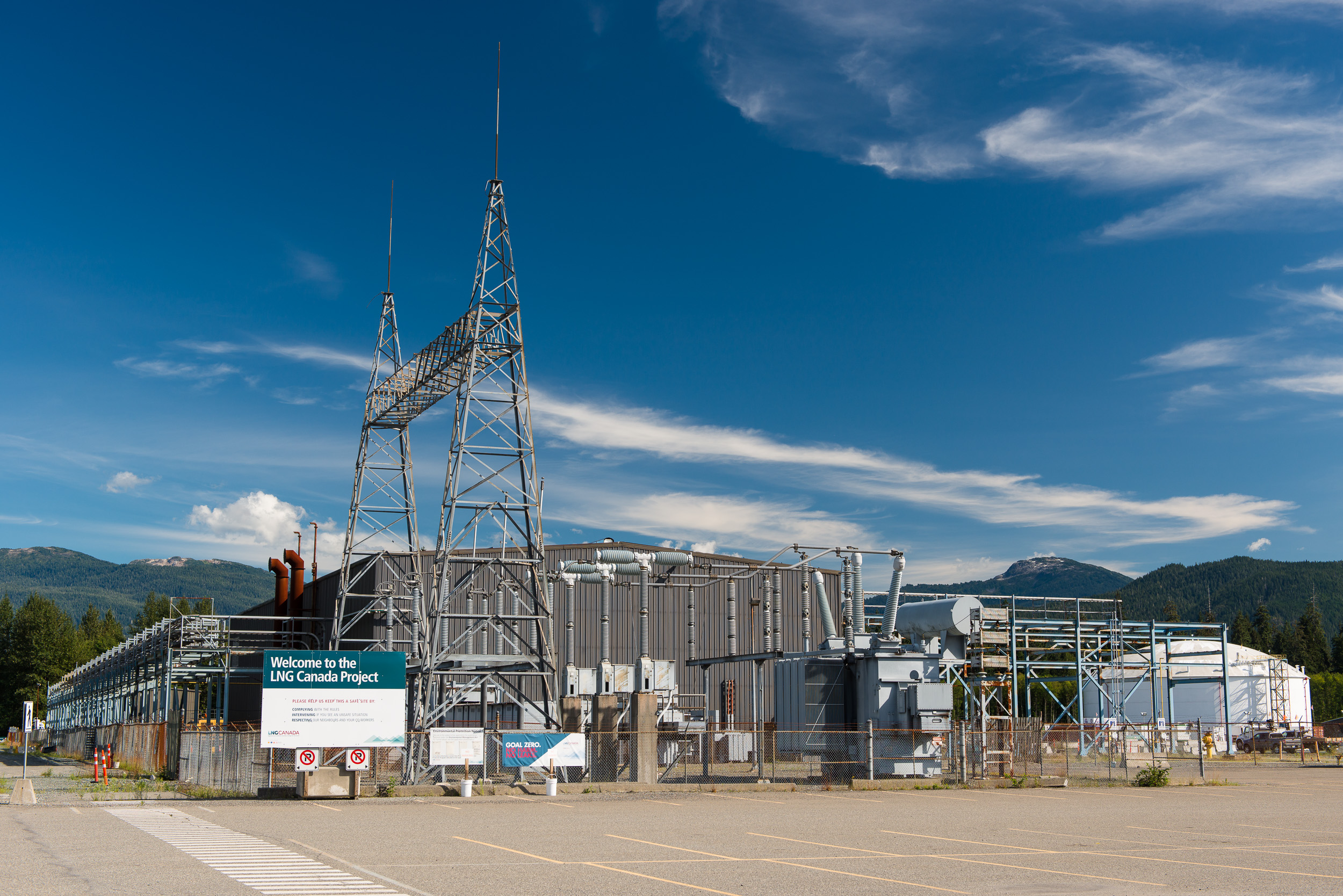
The site of the LNG Canada project in Kitimat in 2017. Photo: Garth Lenz / The Narwhal
Government press materials tout LNG Canada as a $40 billion project, calling it “the largest private-sector investment in B.C.’s history.”
But LNG Canada estimates a $25 to $40 billion investment for a two-phase project. Only phase one of the project has received approval.
For phase one, LNG Canada has only committed to spending between $2.5 and $4.1 billion in B.C. and acknowledges that between $7 and $11.1 billion for phase one will be spent on foreign soil. This includes the cost of construction of the export facility, which will be manufactured abroad and shipped in pieces to Kitimat.
LNG Canada will be one of the country’s largest greenhouse gas emitters
If you followed the recent debate about Teck Resources’ Frontier oilsands mine, noted for its environmental impacts and greenhouse gas emissions, hold onto your hat.
LNG Canada will be one of the country’s largest greenhouse gas emitters — and that’s before fugitive methane emissions from fracking are factored into the carbon equation.
According to the B.C. government, the LNG Canada project will emit four megatonnes of carbon emissions each year during its first phase — the equivalent of adding 856,531 cars to the road.
Teck’s Frontier oilsands mine would have emitted 4.1 megatonnes of greenhouse gases a year, putting the two projects almost on par with each other for carbon pollution during LNG Canada’s first phase.
If the project’s second phase goes ahead, LNG Canada will emit more than double the carbon of the cancelled Frontier oilsands mine project — 8.6 megatonnes per year in 2030, rising to 9.6 megatonnes in 2050.
That’s roughly the equivalent of putting 1.7 million new cars on the road each year.
The B.C. government’s emissions estimate includes only the first phase of the project.
Emissions from both LNG Canada project phases would represent close to three-quarters of B.C.’s legislated target for greenhouse gas emissions in 2050, set at about 13 megatonnes a year.
Isn’t natural gas a clean, environmentally friendly fuel?
Industry has successfully marketed gas as ‘natural’ because, like other fossil fuels, it comes from the earth. The term “natural gas” is now widely used.
The majority of gas shipped through the Coastal GasLink pipeline will come from northeast B.C., where the predominant form of extraction is a process called hydraulic fracturing, or fracking. B.C. is the fastest-growing natural gas producer in Canada, thanks in large part to the advent of fracking.
Fracking is a technique that involves blasting a mixture of water, chemicals and sand deep into the earth to break apart rock formations and release previously inaccessible oil or natural gas deposits.
Fracking uses vast amounts of fresh water. Recent frack jobs in northeast B.C. have used more than 22 million litres of water per well — enough to fill about nine Olympic-sized swimming pools. The water becomes contaminated after the fracking process and must be disposed of in tailings ponds or by being injected deep underground.
The industry’s pressing need for fresh water has resulted in the construction of at least 90 unlicensed dams in northeast B.C.
Fracking releases significant carbon emissions through fugitive leaks of methane, a potent greenhouse gas. New research published in the journal Nature suggests natural gas is a much dirtier fossil fuel than previously thought, with emissions that put it on par with coal.
There is also increasing evidence of human health issues linked to fracking. One study found mothers who live close to a fracking well are more likely to give birth to a less healthy child with a low birth weight.
Human health issues related to fracking were recently flagged by Dawson Creek doctors as a potential cause for concern after they saw patients with symptoms they could not explain, including nosebleeds, respiratory illnesses and rare cancers, as well as a surprising number of glioblastomas, a malignant brain cancer.
An independent scientific review commissioned by the B.C. government found that fracking entails numerous unknown risks to human health and the environment.
The review did not include a thorough examination of the public health implications of fracking, in keeping with the government’s quiet assurance to the industry lobby group Canadian Association of Petroleum Producers that the hot button issue would not be part of the panel’s mandate.
Even before a fracking boom gets underway for the LNG Canada project, there are more than 11,000 inactive fracking wells in B.C. that need to be decommissioned and the land restored to its previous condition.
In an audit last year, B.C.’s former Auditor General Carol Bellringer found the oil and gas commission had not secured enough money from companies to cover an estimated $3 billion in cleanup costs.
Bankrupt fracking companies have also left the commission — and, ultimately, taxpayers — responsible for cleaning up a burgeoning number of orphan wells, including contaminated sites and wastewater pits.
The number of orphan wells is poised to double to between 646 and 746 this year, after a 769 per cent increase over the past four years. Last year, the commission reclaimed just four orphan well sites. It plans to reclaim 15 sites this year, leading many to wonder if the province will ever catch up.
What does this all have to do with the Site C dam, anyway?
The publicly funded Site C dam, currently under construction on B.C.’s Peace River, will provide subsidized electricity for the LNG Canada project.
The Site C dam was rejected in the 1980s and 1990s — the first time by the watchdog B.C. Utilities Commission after two years of hearings, and the second by BC Hydro’s own board of directors, who said the project was too costly and its environmental and social impacts were too great.
B.C.’s former Liberal government approved the project in 2014 after changing the law to strip the utilities commission of its responsibility to determine if the project was in the public interest.
The dam will flood 128 kilometres of the Peace River and its tributaries, putting an area the equivalent distance of driving from Vancouver to Whistler under water up to 50 metres deep.

Site C dam construction on the Peace River. Photo: Garth Lenz / The Narwhal
B.C.’s NDP government had an opportunity to cancel the project after it came to power in 2017 but chose to continue construction, approving another $2 billion for the dam’s escalating tab, which now stands at $10.7 billion.
The Site C dam will flood traditional Treaty 8 territory, including First Nations burial grounds, trapping and hunting grounds and cultural and spiritual sites. It will eradicate some of Canada’s richest farmland, inundate protected heritage and archeological sites, destroy habitat for more than 100 species vulnerable to extinction and flood 800 hectares of carbon-storing wetlands.
You can read all about the project and its impacts on the Impact Assessment Agency of Canada (formerly the Canadian Environmental Assessment Agency) website. Be warned: it’s about 15,000 pages.
A UBC study found the Site C project will have more significant adverse environmental effects than any project ever examined in the history of Canada’s environmental assessment act, including oilsands projects, mining projects and the Northern Gateway project, which was cancelled by the Trudeau government on the grounds that impacts on First Nations and the environment were unacceptable.
The global human rights group Amnesty International says the Site C dam project violates human rights and does not meet international standards for forced evictions. Two Treaty 8 First Nations have filed civil claims alleging that the Site C dam and two previous dams on the Peace River constitute an unjustifiable infringement of their treaty rights.
Lawyers warn that a settlement in favour of the nations could add $1 billion to the Site C dam price tag.
How did governments push to advance the LNG Canada project?
To attract the corporations behind LNG Canada, B.C.’s NDP government offered a smorgasbord of direct subsidies worth an initial $5.35 billion, in the form of tax reprieves, tax exemptions and discounted electricity rates.
Without government handouts the LNG Canada project, set to begin operation by 2025, would not be economical for the companies involved.
The B.C. government justified the subsidies on the grounds that LNG Canada will provide 10,000 construction jobs (that’s including construction jobs on the Coastal GasLink pipeline) and $24 billion in provincial revenue over the next 40 years.
The list of subsidies is long but it’s your money so you might want to know how it’s spent. Grab some popcorn and settle in. Ready? Here we go.
While British Columbians have to pay provincial sales taxes on, for example, an electric car, LNG Canada’s PST exemption means the company will not have to pay this tax during its construction period. That gives the consortium what is essentially an interest-free loan for two decades, for an annual savings of about $19 million to $21 million, according to economist Marc Lee, who has called the LNG Canada project a “carbon bomb.”
The NDP government has also eliminated the LNG income tax (a tax the B.C. NDP supported while in opposition), while a natural gas tax credit gives LNG Canada an additional three per cent corporate income tax cut.
While touting its Clean BC plan, the provincial government has at the same time exempted LNG Canada from increases in the B.C. carbon tax above $30 per tonne.
The consortium will get a rebate that economist Lee pegs at about $62 million a year (once the carbon tax, now at $40 per tonne, rises to $50 per tonne next year).
And, even as BC Hydro customers face rate hikes totalling eight per cent from 2019 to 2024, the publicly funded Site C dam will provide subsidized electricity for LNG Canada.
According to Lee, the new power supplied from Site C will cost about double what LNG Canada will pay for it — amounting to a subsidy valued at between $32 million and $59 million per year. That leaves ratepayers to make up the difference.
“The LNG Canada agreement locks in these tax and subsidy provisions for 20 years against future changes by governments that might be concerned about, say, climate change,” Lee notes in the Georgia Straight. “A decade from now — amid growing climate chaos — a newly elected B.C. premier would have their hands tied by having to pay financial compensation for any changes to the four measures that affect LNG Canada’s bottom line.”
Provincial ratepayers and federal taxpayers will also foot the bill for new transmission lines for the LNG Canada project.
Through its “Investing in Canada Infrastructure Plan,” the federal government will contribute $83.6 million to the cost of building a new transmission line to supply B.C.’s natural gas industry with power from the Site C dam. BC Hydro, a publicly owned utility, will provide $205.4 million. If you’re a BC Hydro customer, that’s your money.
In August 2019, the B.C. and federal governments also announced a $680 million fund to support the further electrification of LNG in B.C. Details about what each level of government will pay, and when spending will occur, have not yet been announced.
Additionally, the federal government has granted a $1 billion tariff exemption for the importation of steel modules for the LNG Canada and Woodfibre LNG projects.
The B.C. government also provides LNG Canada with indirect subsidies. B.C.’s royalty regime offers the gas industry a range of credits that substantially reduce the actual royalties paid. Royalties are what companies pay to governments for developing a publicly owned resource.
The B.C. budget released last month shows that natural gas royalties would have been $534 million this year. But after royalty credits are deducted the number drops to $153 million — a far cry, Lee points out, from gas royalties in the $1 billion to $2 billion range the province collected in the early 2000s.
Deep well credits are yet another form of subsidy for the gas industry, with the B.C. government providing $1.2 billion to fracking companies over a recent two-year period.
Canada provides more government support for oil and gas companies than any other G7 nation and is among the least transparent about fossil fuel subsidies, according to a report from a coalition of NGOs.
But won’t the Site C dam produce clean energy?
Large hydro dams are a hugely expensive and destructive way to generate renewable energy. They are not “green,” or environmentally friendly.
The Site C dam and its reservoir will eliminate ancient wetlands called tufa seeps, old-growth boreal forests and a living laboratory for scientists to study how species adapt to climate change. It will also poison bull trout, a species vulnerable to extinction, and other fish with methylmercury.
The Peace River Valley, which would be inundated by the dam, is a flyway for migratory birds and part of the boreal bird nursery. It hosts three-quarters of all B.C.’s bird species. As many as 30,000 songbirds and woodpeckers nest in the dam’s future flood zone, which stretches the equivalent distance of driving from Vancouver to Whistler when flooded Peace River tributaries are included.
One study by U.S. scientists shows hydro reservoirs produce considerably more carbon emissions than previously thought. About 80 per cent of the emissions are in the form of methane, a greenhouse gas 34 times more potent than carbon dioxide.
A UBC-led report debunked the unsubstantiated claim by the B.C. and federal governments that the Site C dam’s ecological impacts are justified on the grounds that the project will deliver electricity with lower greenhouse gas emissions than other sources.
The report also found that alternatives to the Site C project would create significantly more jobs, produce electricity at a lower cost with fewer risks and have a significantly lower environmental impact.
What’s next?
After three days and nights of negotiations between Wet’suwet’en hereditary chiefs and the federal and provincial governments, a tentative agreement on land rights and title was reached on March 1. Details of the agreement, which will be shown to all Wet’suwet’en members, have not been released.
Horgan recently said he has no intention of altering the province’s position on the Coastal GasLink pipeline.
“I firmly believe, after many decades involved in public policymaking and observing events, that we are absolutely on the right course,” the Premier said, “and I’m going to carry on.” SOURCE


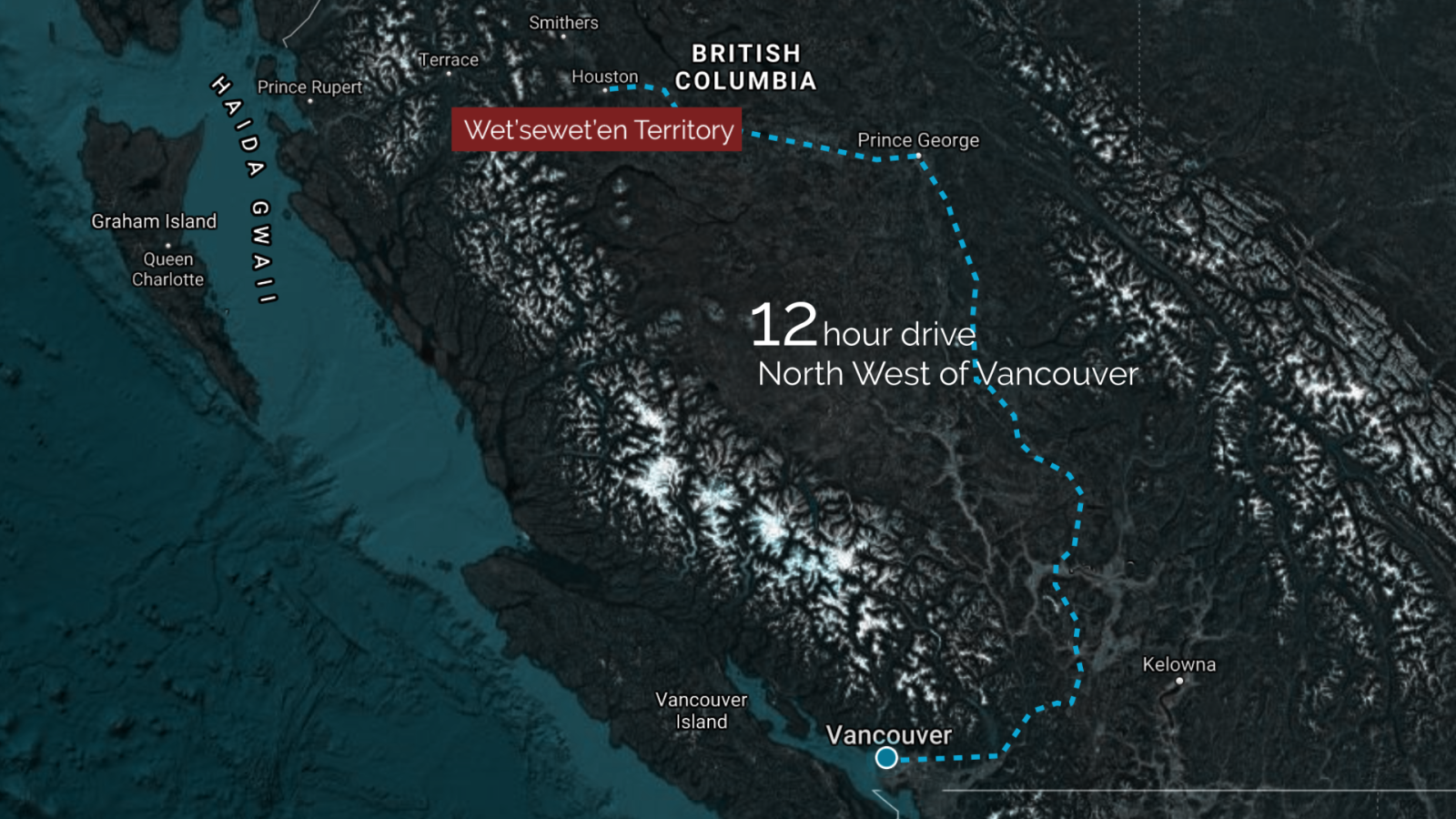







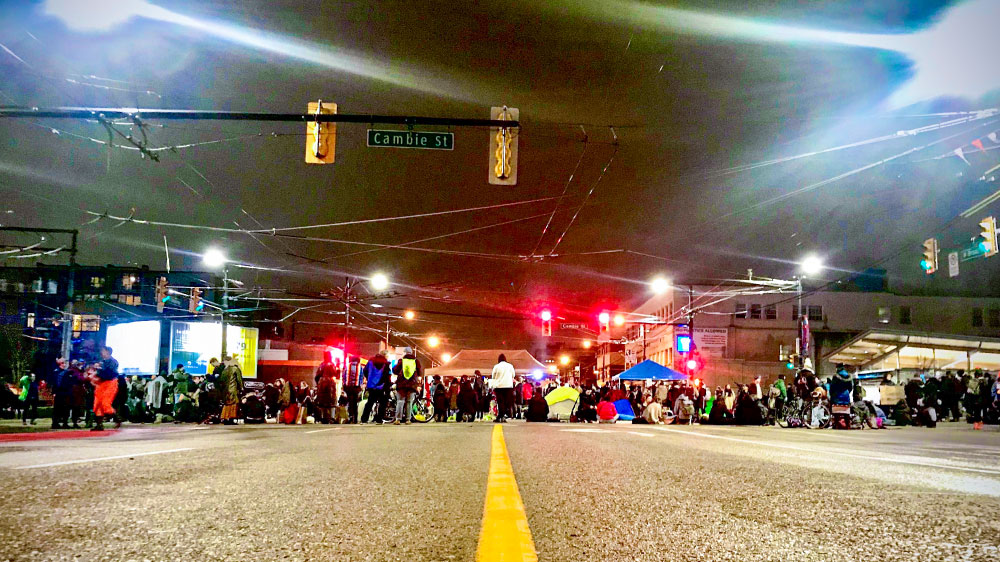

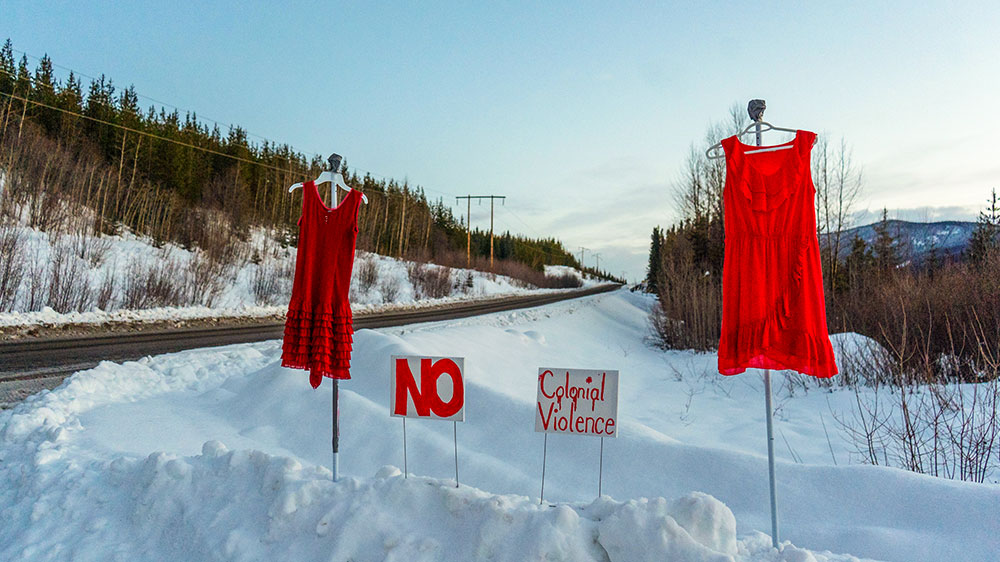











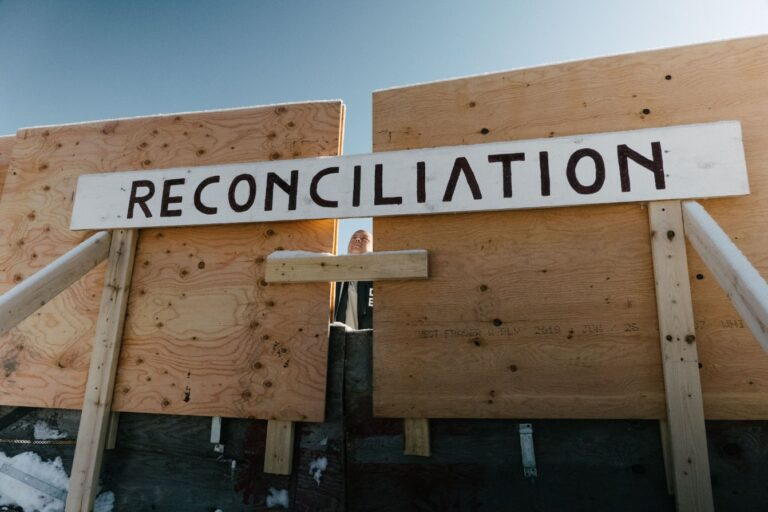

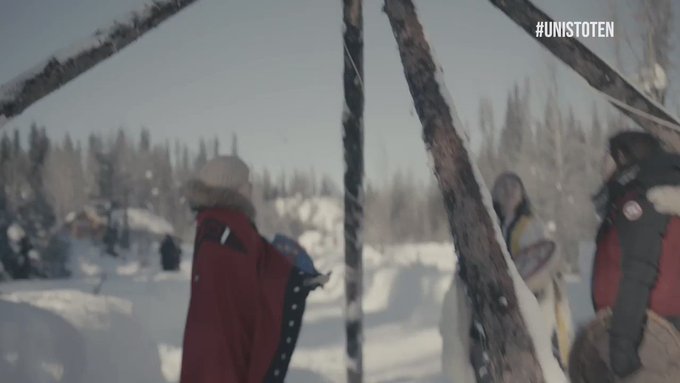
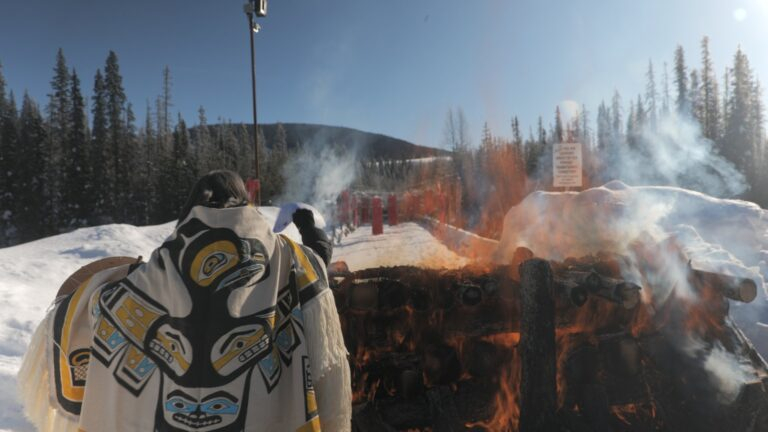
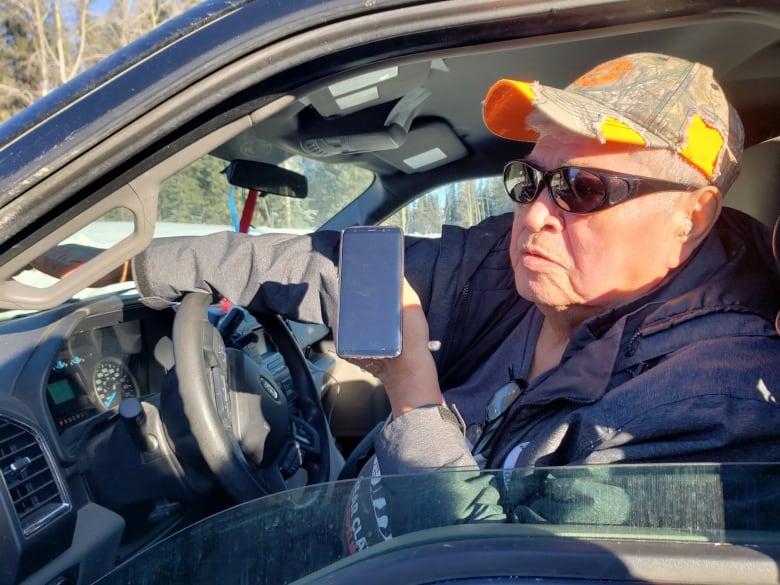



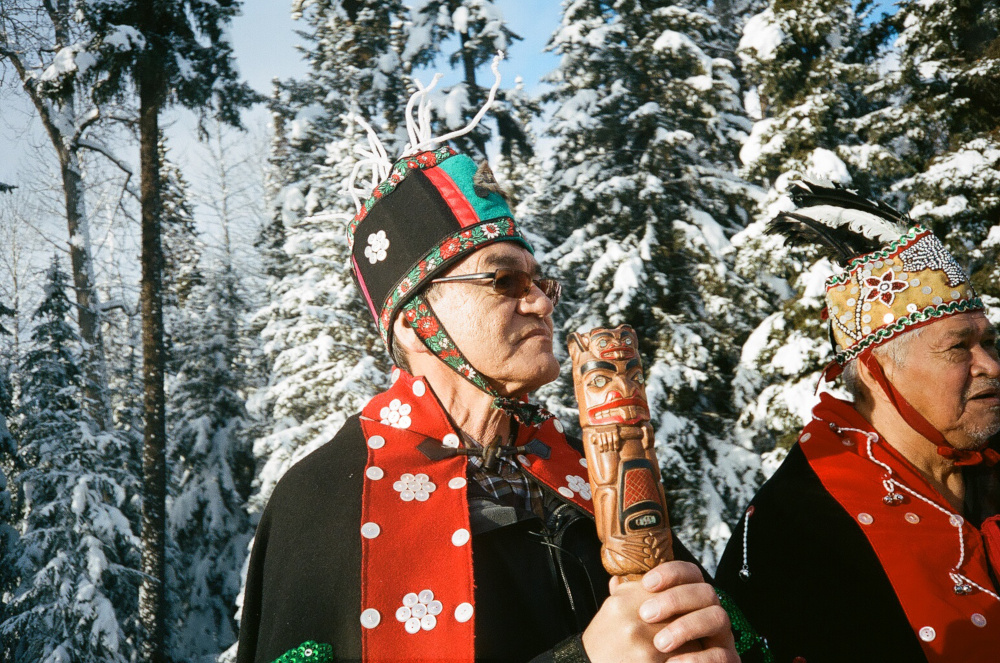
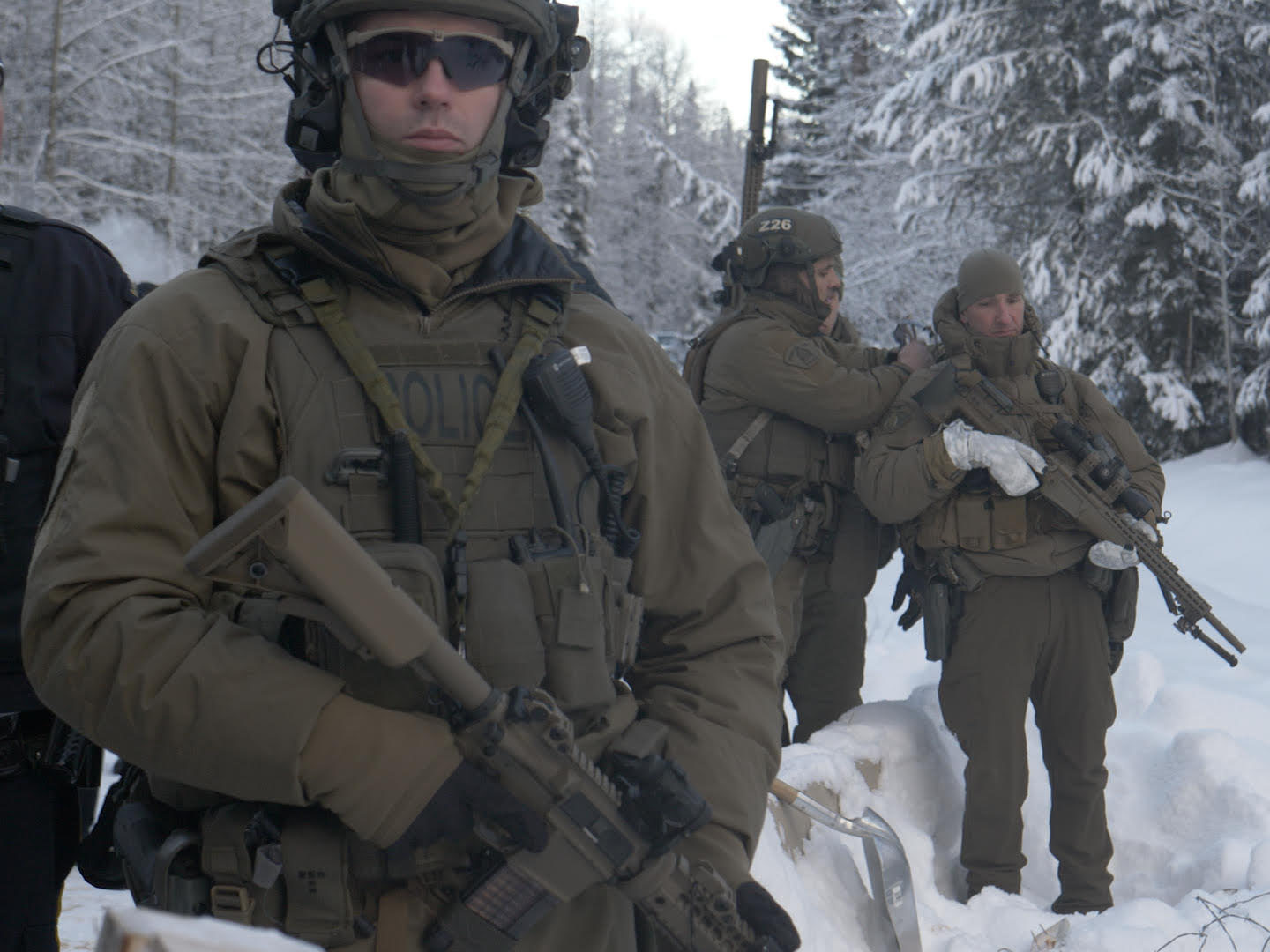

 “Coastal GasLink has been found non-compliant in six legally-required and legally-binding conditions. This report by the B.C Environmental Assessment Office Compliance and Enforcement Officer affirms our own Wet’suwet’en investigations about Coastal GasLink’s willful and illegal disregard for our territories and cultural practices. The provincial government is required to uphold its own law and issue an immediate cease-and-desist work order for Coastal GasLink pipeline project on Wet’suwet’en territories. This project already does not have free, prior and informed consent under Wet’suwet’en rule of law, and now is violating B.C laws,” says Chief Namoks.
“Coastal GasLink has been found non-compliant in six legally-required and legally-binding conditions. This report by the B.C Environmental Assessment Office Compliance and Enforcement Officer affirms our own Wet’suwet’en investigations about Coastal GasLink’s willful and illegal disregard for our territories and cultural practices. The provincial government is required to uphold its own law and issue an immediate cease-and-desist work order for Coastal GasLink pipeline project on Wet’suwet’en territories. This project already does not have free, prior and informed consent under Wet’suwet’en rule of law, and now is violating B.C laws,” says Chief Namoks.